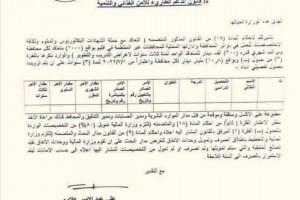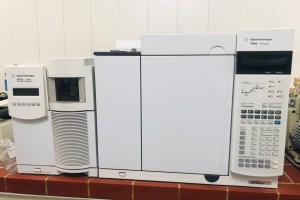
The College of Education for Pure Sciences at the University of Basrah in the Department of Chemistry discussed a master's thesis on the preparation, identification and analytical study of some ligands derived from diketones and their metallic complexes
The thesis presented by the researcher (Ansam Sajjad Kazem) included
The study includes three axes:
The first axis: the preparation of two new azo dyes (A1, A2) derived from pharmaceutical materials, by reacting (4-amino ethyl benzoate) by nitrification method with compounds each of (acetyl acetone and salbutamol (ventolin)) and these compounds were identified using infrared spectroscopy (FT-IR) As well as diagnosed by proton nuclear magnetic resonance technique (H-NMR1), the most important expected signals appeared for the protons of the main groups of the two pigments, as well as were diagnosed by mass spectrometry, knowing the molecular ion and the base ion.
Complexes of these aligands were also prepared with zinc (II) and cobalt (II), respectively, and they were also identified by infrared spectroscopy and mass spectrometry.
The molar conductivity and atomic absorption of the flame were studied with these complexes, in addition to the magnetic sensitivity.
Where the study showed that the prepared aligands (A1, A2) were wired as two-toothed aligands of type (N, O) with both zinc (II) and cobalt (II), and the correlation ratio between them was (1:2).
The second axis: includes a spectroscopic study of two azo dyes (A1, A2). The effect of pH was studied in the electronic absorption spectra of the two dyes in the visible region at a range of wavelengths (320-500) using solutions with different pH values (2-12).
The ionization and ionization constants were calculated by the mid-height method, as well as the isopstic points and the proposed ionization and ionization mechanics were determined.
The third axis: includes some applications on the two azo dyes
The possibility of studying the use of two dye solutions as acid-base bleaching indicators (strong acid and strong base, weak acid and strong base).
A solution of the two dyes (A1, A2) was used to determine the nitrite ion and the extent of applicability of Beer's law. The molar absorption coefficient, specific absorptivity values (a), Sandel sensitivity (s), standard deviation values (S.D), detection limit (DL) were calculated. Correlation coefficient (R2) and limit values were calculated. Beer's Law Applicability.








